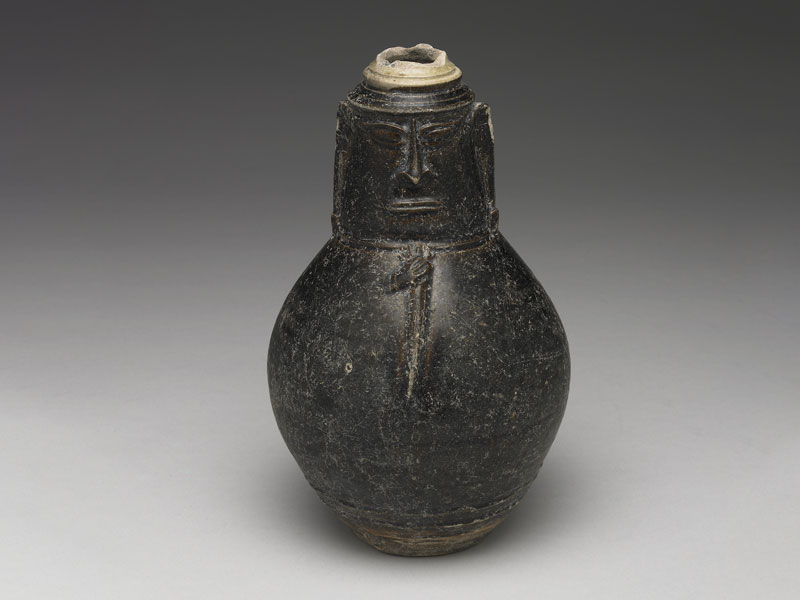According to archaeological investigations, there had been skills in the area of current Cambodia to use a potter's wheel to shape and make pale yellow-brown earthenware by the seventh and eighth century at the latest (Chenla Period, 630-802). The style of shaping these wares like metal ones was said to come from India. In the latter half of the ninth century, glazed earthenware was born, following the highly developed civilization of the Angkor Period (802-1431), during which the empire flourished, and many palaces and temples were being built. Archaeologists have discovered that, at the time, key sites in Cambodia which produced building components and high-temperature glazed earthenware were all in the surroundings of Angkor. Although there are relatively fewer ceramic works from Cambodia remaining today, black-brown glazed, carved, and animal- shaped lidded containers are many, which might have been used for religious rituals by the upper classes. Compared with other Southeast Asian ceramic cultures, which bear signs of strong influence from China, one can only draw a tenuous line to link the development of Cambodian ceramics to the aesthetic and commercial trends of Chinese ceramics. Yet it is exactly this indigenous uniqueness of Cambodian ceramic art that creates its appeal of simplicity and approachability today.
